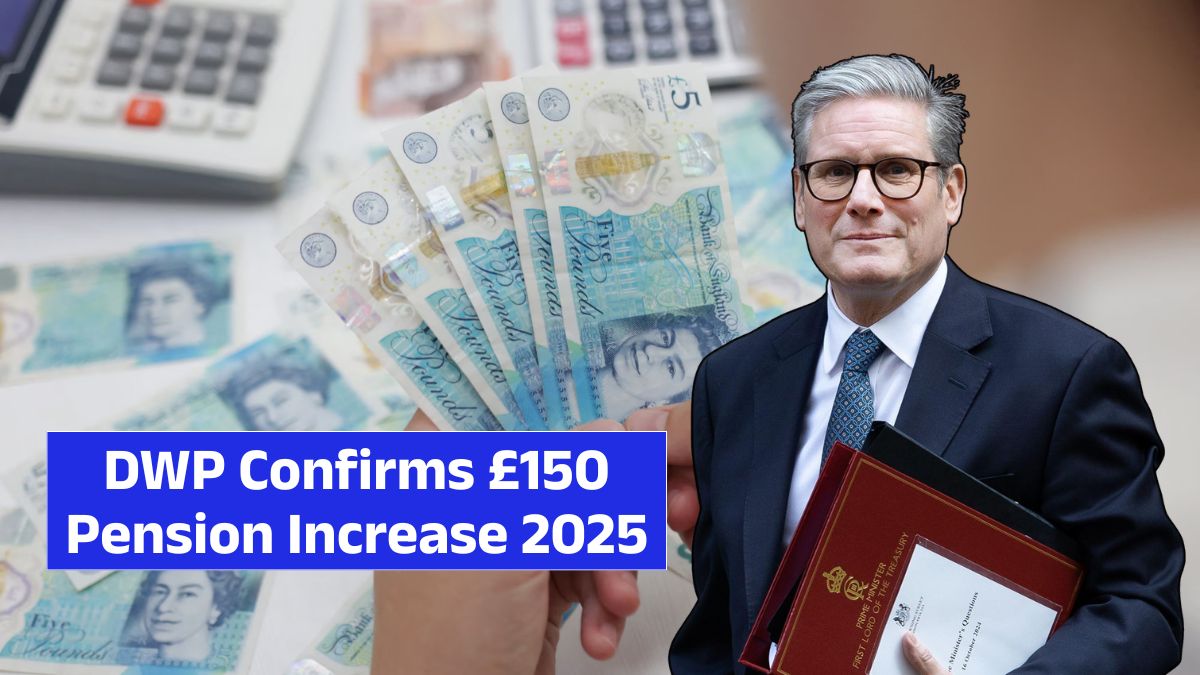The State Pension remains one of the UK’s most vital financial lifelines, providing stability and independence for millions of retirees. As we step into October 2025, important updates and discussions around the State Pension age, payment structure, and future reforms are gaining attention. These developments could affect not only those already receiving pensions but also people approaching retirement in the coming years.
Understanding these changes is essential for effective financial planning, especially as the government continues to balance longer life expectancy, rising costs, and national budget pressures.
Current State Pension Age in October 2025

As of October 2025, the State Pension age remains 66 for both men and women. This age threshold, equalised in 2020, continues to be the standard benchmark for retirement eligibility across the UK.
However, the next scheduled rise is already on the horizon. Between 2026 and 2028, the pension age will gradually increase to 67, and discussions are underway to accelerate the move to 68, potentially between 2037 and 2039 — several years earlier than originally planned (2044–2046).
While no immediate changes take effect this October, the ongoing government review signals that millions of future retirees—particularly those born in the late 1950s and early 1960s—could face delayed access to their pensions.
Why the UK Government Is Reviewing Pension Age Again
The primary driver behind the pension age review is the nation’s shifting demographics. When the State Pension was first introduced, people typically lived only a few years after retiring. Today, many Britons live well into their 80s and 90s.
This increase in life expectancy means people are drawing pensions for much longer, placing heavy pressure on public finances. Combined with a shrinking workforce and rising inflation, the system faces sustainability challenges.
The government’s review aims to balance three core objectives:
- Ensuring financial sustainability for the Treasury.
- Maintaining fairness between current and future generations.
- Supporting those in physically demanding jobs or with lower life expectancy.
Additionally, the post-pandemic economy, labour shortages, and slow wage growth are influencing DWP strategies to make the pension system more adaptive and equitable.
How the Pension Age Review Affects Future Retirees
Any shift in the State Pension age directly determines when individuals can start receiving payments. Even a few months’ change can significantly alter retirement planning, especially for those nearing their mid-60s.
For example:
- Someone born in April 1960 currently reaches pension age at 66 years and 8 months.
- But if the government accelerates the rise to 67, individuals born in 1961 or later may have to work longer before qualifying.
This not only impacts personal savings and budgeting but also influences decisions about early retirement, part-time work, and private pension withdrawals.
For existing pensioners, however, the main focus remains on payment adequacy—ensuring the income they receive keeps pace with the cost of living.
Full State Pension Rates for 2025–26
In April 2025, pensioners saw an increase under the Triple Lock policy, which guarantees annual pension rises by the highest of:
- Average earnings growth,
- Consumer Price Index (CPI) inflation, or
- 2.5%.
For the 2025–26 financial year, the full New State Pension is £233.10 per week, amounting to around £12,120 annually.
Those under the Basic State Pension (for retirees before April 2016) now receive £178.50 per week.
Although this increase provides some relief, inflation and energy costs continue to erode purchasing power, leaving many pensioners financially stretched.
What Might Change After the 2025–26 Review
The State Pension Age Review, expected to conclude by early 2026, could redefine the future of retirement in the UK. The government is considering several proposals, including:
- Raising the pension age to 68 before 2040.
- Maintaining 67 as the threshold until at least 2044.
- Linking pension age dynamically to life expectancy.
Experts predict that a flexible, data-driven model may emerge, where future increases automatically adjust to demographic changes.
However, this approach faces criticism for being inequitable, as life expectancy varies significantly between income groups and regions. Manual labourers, for instance, often live shorter lives than white-collar professionals — meaning they would receive fewer years of pension payments.
Impact on Women and Lower-Income Workers
Women, particularly those born in the 1950s, have been historically affected by rapid pension age increases. Groups such as WASPI (Women Against State Pension Inequality) continue to campaign for fair compensation and smoother transitions between policy shifts.
For lower-income workers and self-employed individuals, the key concern is contribution gaps. Missing National Insurance (NI) contributions can significantly reduce entitlement.
The DWP advises everyone approaching retirement to:
- Check their NI record via GOV.UK.
- Fill any contribution gaps with voluntary Class 3 payments.
This proactive approach helps ensure retirees receive the maximum possible pension once they qualify.
How to Check Your State Pension Forecast
Every UK resident can easily check their State Pension forecast online through the official GOV.UK service.
Steps:
- Log in using your Government Gateway ID.
- Visit the “Check Your State Pension” portal.
- View how much you are projected to receive and your eligibility date.
- Identify any shortfalls and learn how to increase your entitlement.
Alternatively, you can request a printed version of your forecast if you prefer traditional documentation.
This tool is especially helpful for those aged 50–65 who are planning their retirement timeline and budgeting.
Could the Pension Age Ever Go Down?
While many retirees wish for an earlier pension age, current economic realities make this extremely unlikely. With an ageing population and increasing pension costs, lowering the qualifying age would strain public finances even further.
However, certain exceptions do exist:
- Individuals with severe disabilities or long-term illnesses may qualify for early retirement or additional support.
- Benefits such as Pension Credit, Attendance Allowance, and Personal Independence Payment (PIP) provide crucial aid for those unable to work due to health conditions.
Financial Planning Before Retirement
With the pension age rising and living costs climbing, financial preparation is more important than ever. Experts recommend:
- Tracking your National Insurance contributions regularly.
- Building a private or workplace pension for added stability.
- Maintaining an emergency fund to handle unexpected costs.
- Reviewing your retirement budget to ensure sustainability.
- Seeking professional financial advice to maximise income and tax efficiency.
Proper planning ensures a comfortable and independent retirement, even as pension policies evolve.
Government’s Next Steps and Policy Timeline
The UK government plans to publish its formal pension review report by early 2026, integrating the latest demographic and fiscal data.
Key areas under parliamentary debate include:
- Whether to accelerate the rise to 68.
- How to protect manual labourers and vulnerable citizens.
- Whether the Triple Lock policy will remain sustainable long-term.
Advocacy groups, trade unions, and pension experts are expected to heavily influence this debate throughout late 2025 and early 2026.
What Pensioners Should Do Now
For those already retired, ensure you are receiving the correct payment based on the new 2025–26 rates. Double-check your bank statements and contact the DWP for discrepancies.
For people approaching retirement, the next few years are crucial:
- Confirm your eligibility and verify your NI record.
- Check your State Pension forecast.
- Explore supplemental income options like part-time work, annuities, or investments.
- Stay informed about DWP announcements to avoid surprises.
FAQs on UK State Pension Age October 2025
Q1. What is the State Pension age in October 2025?
It remains 66 years for both men and women. However, a rise to 67 is scheduled between 2026 and 2028.
Q2. When could the State Pension age increase to 68?
The government may bring the change forward to 2037–2039, depending on the final review.
Q3. What is the full State Pension amount for 2025–26?
The full New State Pension is £233.10 per week, while the Basic State Pension is £178.50 per week.
Q4. How can I check my pension eligibility or forecast?
You can use the Check Your State Pension service on GOV.UK by logging in with your Government Gateway ID.
Q5. Will these changes affect current pensioners?
No. Current pensioners will continue receiving payments as usual, but future retirees may see their eligibility age increase.



















